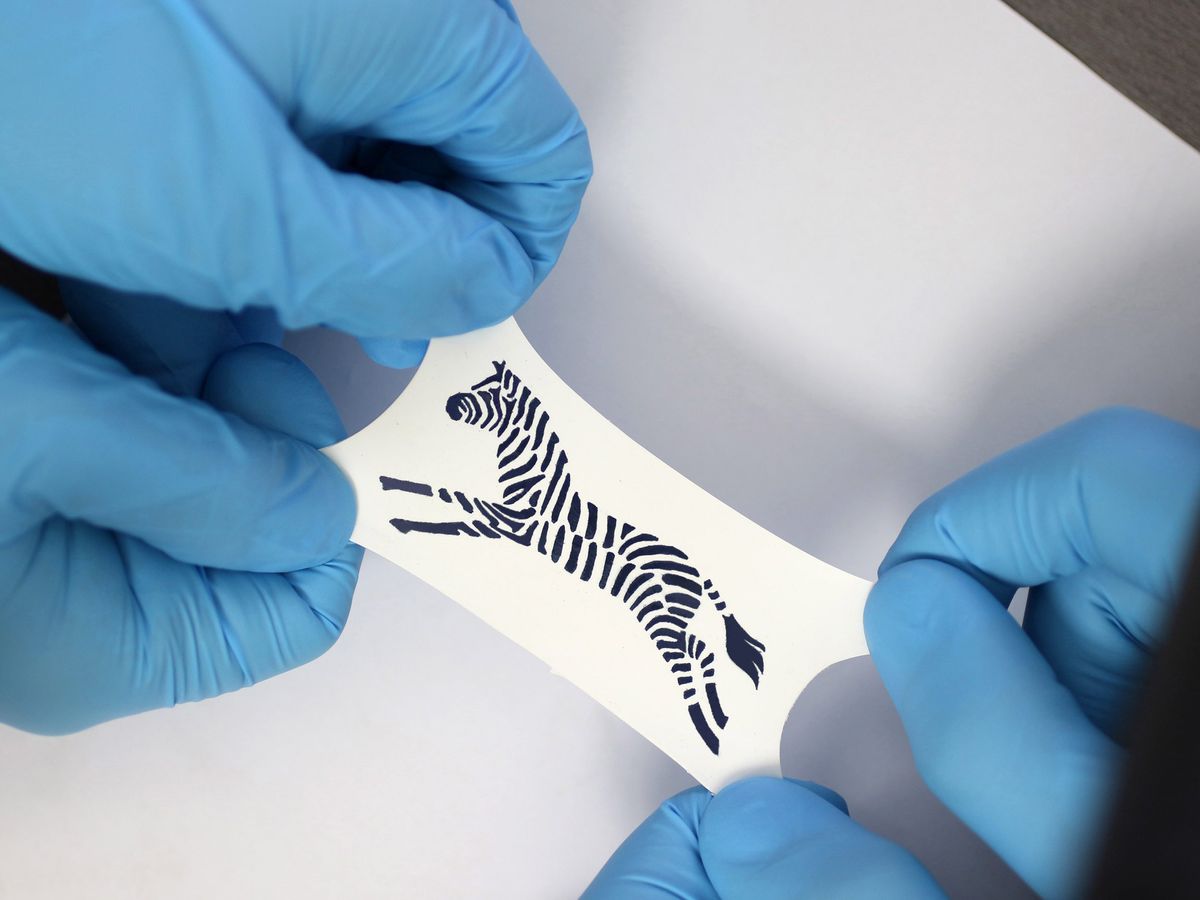Phones, appliances, and humans all generate heat that usually escapes into the environment as waste energy. Thermoelectric generators, which convert temperature differences into electricity, are a way to capture that wasted heat for power.
Researchers have now made a thermoelectric generator (TEG) that is soft and stretchy and that biodegrades completely when exposed to the environment. Unlike conventional rigid thermoelectric devices, this one, reported in the journal Science Advances, could be easily integrated into fabrics, allowing for body-heat-powered wearable sensors or temperature-detecting disposable face masks.

In TEGs, the flow of charge between hot and cold regions creates a voltage difference, leading to electricity. Thermoelectric generators are made in various ways using different materials. They typically consist of one side that stays cold, while the other is in touch with the heat-generating component, be it an electric motor or the body.
Because they are solid-state devices with no moving parts, TEGs are low maintenance and long lasting. So far, they have relied on expensive or toxic semiconductor materials such as bismuth telluride and lead telluride, and mainly found use in niche applications like spacecraft and satellites.
Researchers have been pushing to bring down the cost and improve the efficiency of TEGs. Recently, a team devised a way to create thermoelectricity by coupling the sun’s warmth with the coldness of space by putting a material that radiates heat into outer space on top of one that absorbs warmth from the surrounding air.
However, the materials and designs used to make TEGs so far “can result in a complex and inefficient TEG that is bulky and difficult to fit in with other components,” says Young Min Song, a professor of electrical engineering and computer science at Gwangju Institute of Science and Technology, in Korea.
Song and colleagues decided to ditch the conventional top-down stacked approach. Instead, using a pattern inspired by the stripes of a zebra, they create hot and cold regions next to each other on a surface to create an in-plane temperature difference large enough to produce electricity.
They start with a white sheet made of a stretchable and biodegradable polymer called caprolactone that is commonly used for surgical-implant and drug-delivery devices. The material reflects sunlight and is a strong emitter of infrared heat. The researchers coat the sheet with regularly spaced strips of a black polymer that absorbs sunlight and reflects infrared radiation. The alternating black and white strips create hot and cold regions on the stretchable material.
The researchers put the striped sheet on top of what they call a silicon nanomembrane. This nanoscale membrane is an array of several n- and p-doped silicon wires, which the researchers grow in a serpentine pattern on a silicon wafer and then transfer to a sheet made of the ester caprolactone. The wires’ wavy structure helps them stretch without breaking.
When the researchers placed this device outdoors for testing, the white parts became up to 8 °C cooler than the ambient temperature, while the temperature of the black parts rose up to 14 °C above ambient air, creating a maximum temperature difference of 22 °C. The silicon wires converted this temperature difference into electrical energy, generating a maximum power of about 6 microwatts per square meter (µW/m²).
That is enough to operate low-power sensors, Song says, but he admits it is lower than ideal for commercial applications. Using more thermoelectrically efficient materials like bismuth telluride would boost the power output, but the advantage here is that the device is low cost, stretchable, and completely biodegradable. “Even when the sample was stretched by about 1.3 times, the generation performance was maintained,” Song says.
In the lab, the device dissolved completely into harmless by-products in 35 days when placed in a saline solution. That degradation would take longer in natural environments, Song says.
Prachi Patel is a freelance journalist based in Pittsburgh. She writes about energy, biotechnology, materials science, nanotechnology, and computing.



